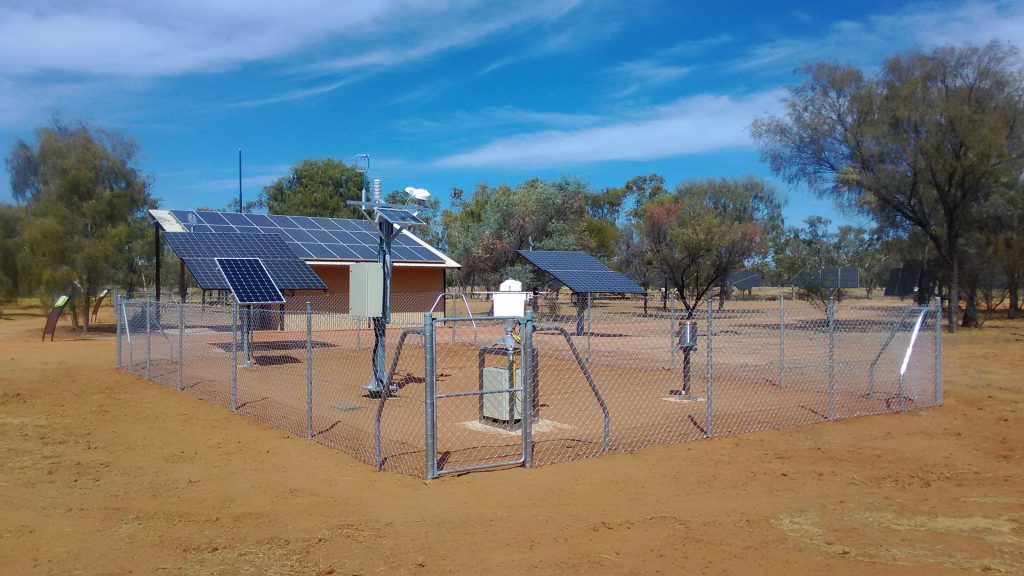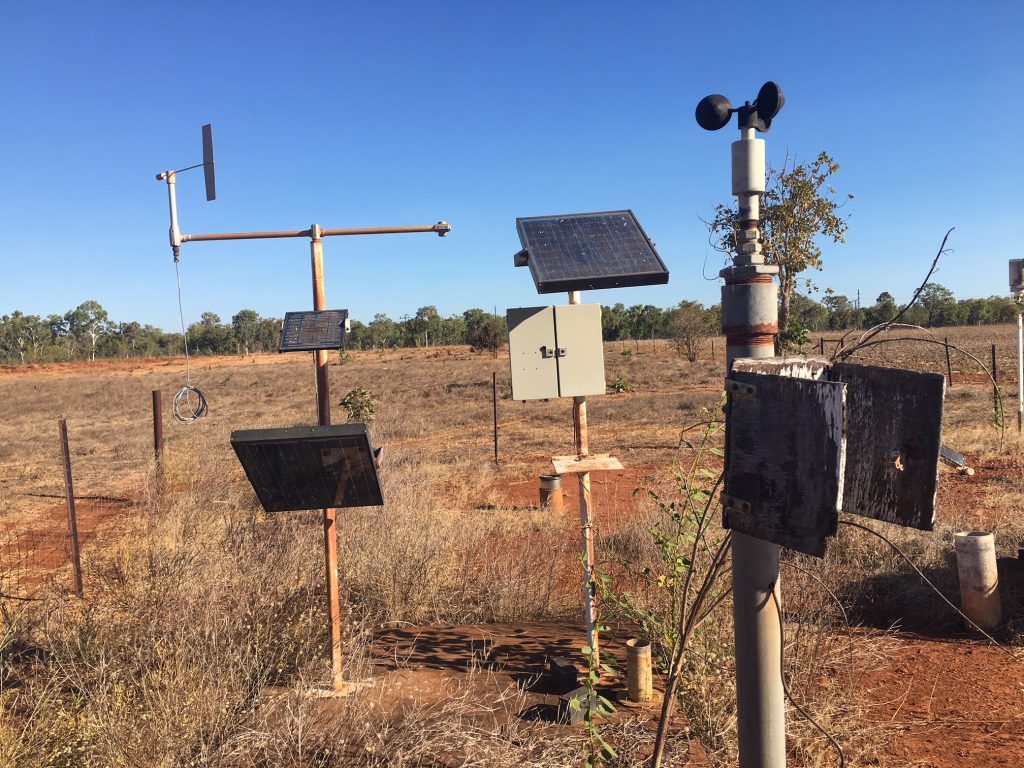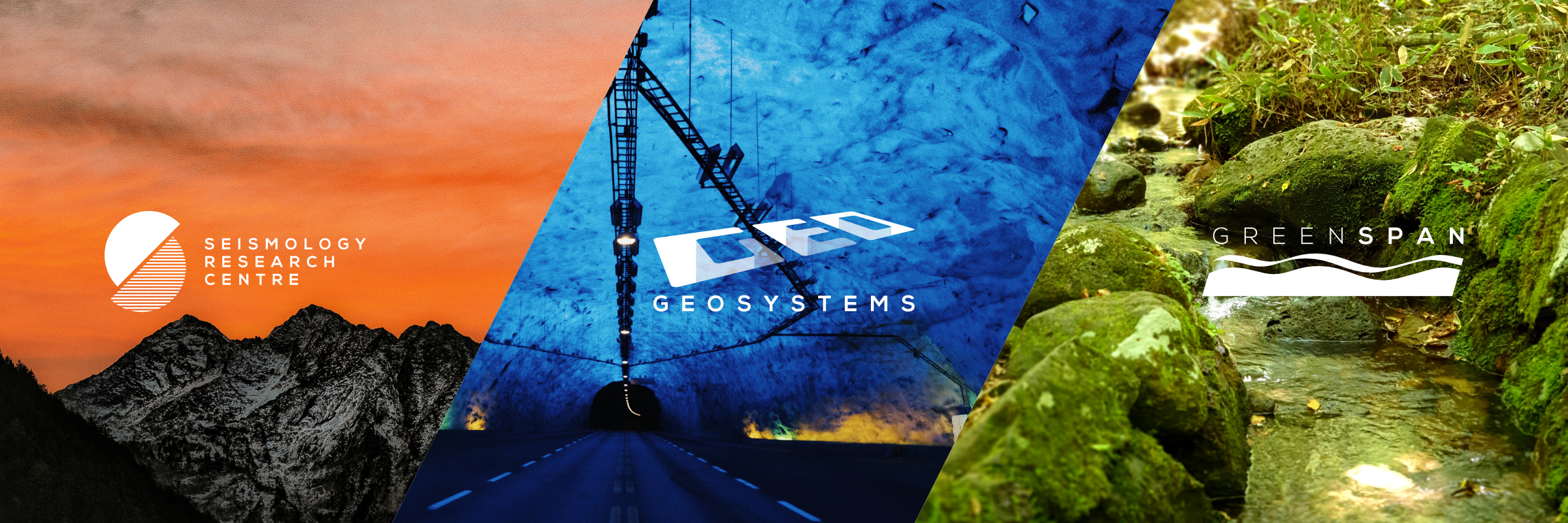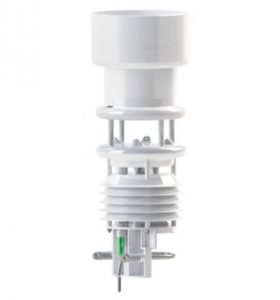ESS Earth Sciences are often asked the differences between compact weather sensors and “traditional” weather stations. Specifically, which is the best option. As compact weather stations measure up to 9 parameters in one unit, it may be assumed the answer is simple. However, it is not as black and white as each option has advantages and disadvantages. In this article, we aim to explore the two systems and highlight their qualities and comparative weaknesses.
What are compact and traditional weather stations?
Compact weather sensors

Modern compact weather sensors generally take the form the white cylinder seen in photo 1. Such units can house sensors that will record up to 10 different meteorological parameters simultaneously. Parameters may include; temperature, relative humidity, precipitation type, precipitation intensity, precipitation amount, radiation, lightning (warning system), wind speed, wind direction, and air pressure.
Traditional Weather Stations
Standard weather stations consist of various separate sensors and instruments attached to a single or multiple mounting structures. Therefore, only the instruments installed limit the parameters measured.
Photo 2 shows a weather station installed by ESS Earth Sciences to primarily monitor solar irradiance for solar farm prospecting. The site has a pedestal mounted rain gauge, sun tracker with a pyranometer and pyrheliometer, and other key weather sensors. A Solar panel and battery power the sensors and loggers. However, some weather stations consist of several sensors on a single mast. Note that sensors must be compatible in terms of shading and distortion of airflows etc. when mounted near each other.

Exploring the advantages and disadvantages
When deciding which route to choose, it is important to consider all factors fully. Rarely a single factor outweighs all others, often settling on the right option requires compromises.
Size of installation
Size is an important factor to consider when installing meteorological sensors. This could be determined by how accessible the location is, the available space, or what position the sensor will be installed (top of a bridge, an open field, side of mountain or top of building etc.).
As the name would suggest, compact weather sensors are just that, compact. Their size can range from 15cm to 45cm in height with diameters of 14-16cm, the weight of the larger sensors is approximately 1.7kg. In the size department, there is little competition between the two forms of weather stations.
With such small dimensions, installing compact weather stations in most locations is possible. For example, they may be ideal for carrying into very remote locations where trekking with multiple sensors and a mast is not feasible. Similarly, installing compact weather stations on top of narrow bridges (motorways or over rivers) is possible opening up new avenues of data collection for traffic management and planning.
Integration
Typically, compact weather stations provide either RS485 Modbus or SDI-12 serial outputs through a single cable that easily connects to a datalogger or SCADA system. As such, one cable can deliver data from many sensors. With other forms of weather station, it is common for each sensor to have its own output. As a result, on stations with multiple brands of instruments, it is possible to have various communication protocols. Whilst most dataloggers will be able to read the data from multiple protocols, it makes installation and integration a more difficult task. That said, for some applications having different outputs specific to the instrument makes fault-finding an easier task as the offending sensor can be isolated quickly.

Calibration
As the accuracy and sensitivity of sensors drift over time they must be sent away for calibration at times. Depending on the sensor type and manufacturer, calibration periods typically range between 1-5 years. An advantage of traditional weather stations is that a single instrument can be removed without affecting the others. As such it is possible to send off an anemometer for calibration without having to lose data from say a pyranometer. Conversely, this is not possible with compact weather sensors as they are all housed and integrated within one body. In this case, the entire unit would need sending away for calibration, resulting in extended downtime.
Data continuity
Data continuity is important for any research or monitoring application. Missing data for even the smallest amount of time can skew results or mean missing a critical event. As mentioned, instruments fitted to a traditional weather station are modular. Consequently, should one instrument malfunction it will not affect the other instruments.
As per calibration, it would be possible to remove the malfunctioning instrument without affecting the others. It would even be possible to temporarily replace the malfunctioning instrument with another. For compact weather sensors, this is not possible as they are all integrated within the same body, lucky compact weather sensors are very robust and reliable.
Accuracy
This is where traditional weather stations have the real advantage. Modern compact weather sensors, manufactured by reputable companies, are highly accurate and reliable. However, the manufacturer will install only the sensors they usually use, you cannot for example request for a different rain gauge to be fitted onto a compact weather sensor. However, with traditional weather stations, it is possible to customise the sensor suite to meet the measurement needs. Where accuracy takes precedent it is possible to cherry-pick the most accurate instruments, meaning you can install the best in class for each sensor. No one company manufactures an entire range of best-in-class meteorological sensors so using several manufacturers is common. Conversely, if accuracy is not critical and the installation must be done on a budget, it is possible to choose the cheapest sensors.
As weather stations are generally used for many years, sensor technology will develop over this time. By having separate sensors the traditional weather stations can upgrade individual sensors as required, this is not possible with compact weather sensors.

Cost
As with most decisions, the price has to be factored in, planning and purchasing a weather station is no different. In a like for like comparison of accuracy compact weather sensors are generally cheaper to purchase outright. As an added advantage they can be easily mounted onto a pole and their footprint is extremely small. In comparison, traditional weather stations will take up more land, if this land has to be bought, rented or borrowed the cost will inevitably be higher due to the larger footprint.
As mentioned at the start of this article, there is no one fits all solution to deciding white route to take when choosing a weather sensor suite. If you are looking to install a suit then we would encourage you to contact ESS Earth Sciences to discuss your requirements in more detail, we would be glad to help.


